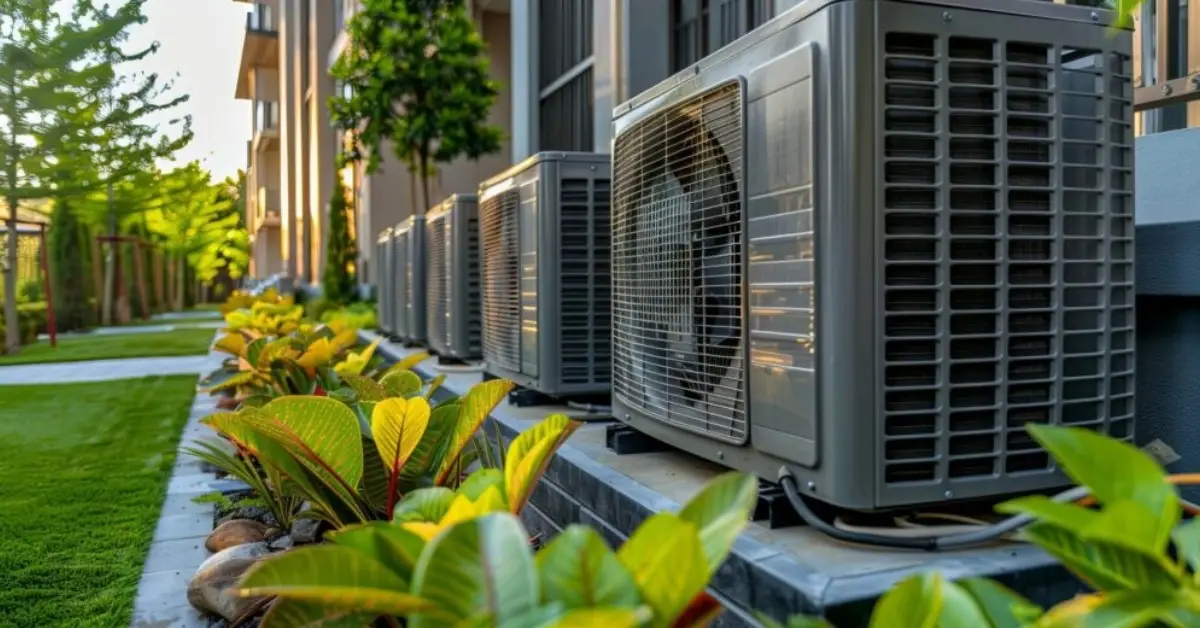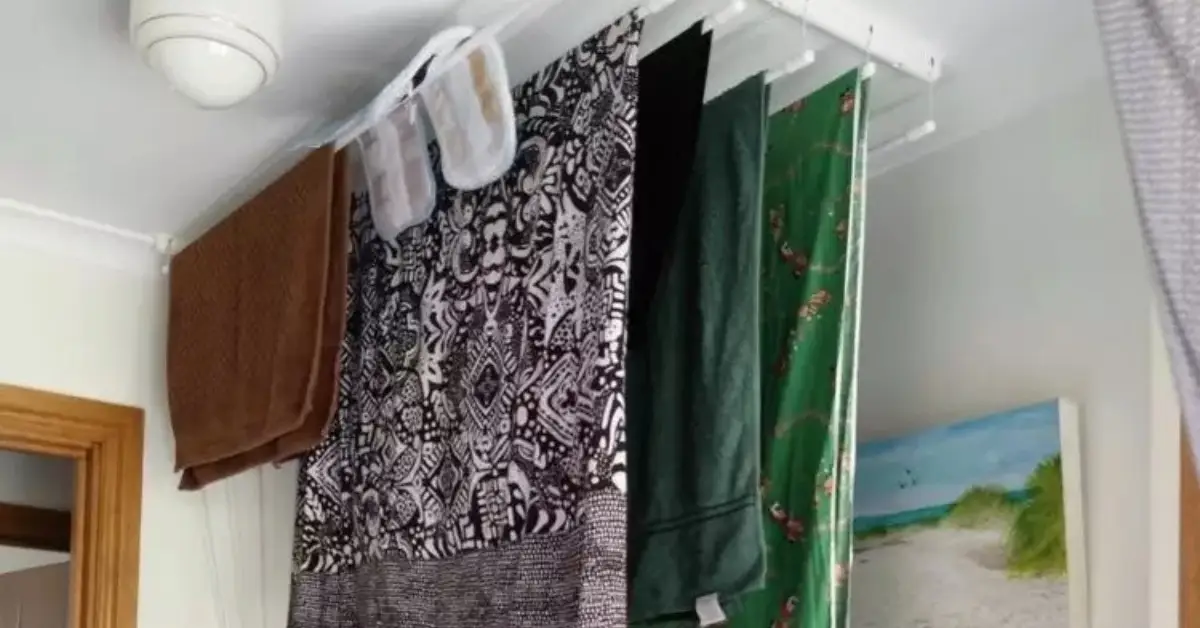5 Items You Should Never Place Next to Your Air Conditioner
If you’re like most homeowners, you probably don’t think twice about what sits near your air conditioner — maybe a few garden pots, a chair, or even the lawn tools you never got around to putting away. I get it. Out of sight, out of mind. But here’s the truth: the space around your AC matters more than you think.
When I started digging into why so many AC units fail earlier than expected, I noticed a pattern — it’s rarely just age or brand. It’s what we keep around them. Simple things like plants, furniture, or paint cans can quietly choke airflow, trap heat, and make your system work overtime. The result? Higher bills, weaker cooling, and an AC that ages fast.
In this guide, I’ll walk you through the five everyday items that should never be near your AC unit. You’ll learn not just what to move, but why it makes such a difference — so your system runs efficiently, safely, and lasts years longer.
Before we get into the list, take a quick look around your unit. What’s sitting nearby right now? You might be surprised how much those little things are costing you.
Common Mistake #1 — Piling Up Furniture or Storage Boxes Nearby
I’ve seen this one so many times — people set up their indoor AC units behind sofas, TV cabinets, or stacks of boxes because it “looks neater.” The problem? You’re choking your AC’s ability to breathe. When air can’t circulate freely, the system has to work twice as hard to push cool air through your home. That means higher energy bills and more wear on the motor.
Think of your AC like your lungs — it needs open space to inhale and exhale air properly. If you block its path, it strains just to do a simple job.
Here’s what you can do instead:
- Keep at least 2 to 3 feet of open space around your unit for smooth airflow.
- Avoid placing furniture, curtains, or heavy décor in front of vents.
- If your AC is wall-mounted, check that nothing’s directly under or over it.
So before you rearrange your living room again, ask yourself: Is my AC hidden or breathing freely?
Mistake #2 — Keeping Plants Too Close to Your Outdoor Unit

I know — you want your outdoor unit to blend in with the garden, surrounded by greenery. It feels natural. But those plants you’re nurturing can slowly turn against your AC.
Leaves, pollen, and roots all sneak their way into the condenser fins. Over time, this buildup traps heat and blocks airflow, forcing your system to overheat and cool less effectively. It’s like running a marathon with a scarf over your mouth.
To protect your outdoor unit:
- Maintain a 24–36 inch gap between plants and the AC.
- Trim shrubs and vines regularly to prevent them from creeping toward the coils.
- Avoid placing potted plants or mulch directly under or around the unit — both can block airflow and attract insects.
So next time you’re gardening, take a few extra minutes to clear the area — your AC (and your energy bill) will thank you.
If you’re already working on improving your home’s air environment, you’ll love this simple habit from our latest guide — This 1 Lüften Habit Will Change Your Indoor Winter Air Quality — it’s an easy way to keep your indoor air cleaner and fresher year-round.
Mistake #3 — Storing Cleaning Chemicals or Paint Cans Nearby
This one’s rarely talked about, but it’s a real problem I’ve noticed in garages and utility rooms. People store paint cans, cleaning sprays, and solvents right next to their AC units — without realizing the danger.
When these chemicals evaporate, they release volatile organic compounds (VOCs) into the air. Over time, VOCs can corrode metal components, eat away at condenser fins, and even leak into your indoor air supply. The result? Reduced efficiency and potential health risks.
Here’s what to keep in mind:
- Always store paint, thinner, and cleaning products away from your HVAC system.
- Ensure your storage area is well-ventilated and not sharing airflow with your AC intake.
- Never use aerosol sprays or air fresheners near your indoor unit — the residue can clog filters.
The EPA’s Indoor Air Quality guidelines warn that chemical vapours can react with AC components, releasing harmful particles into your living space. It’s a silent issue most people never think about until the system starts to rust or smell odd.
In short — your AC is not a storage neighbor for harsh chemicals. Give it space, keep the air clean, and you’ll get cleaner cooling and fewer repairs down the line.
Instead of masking odours with chemical sprays, try switching to safer, plant-based options — here are 9 DIY Natural Air Fresheners That Will Make Your Home Smell Amazing you can make in minutes using simple ingredients.
Mistake #4 — Installing Near Heat-Emitting Appliances (Grills, Dryers, or Lamps)
If you’ve ever placed your AC unit near a grill, dryer, or lamp, you might be setting it up for failure without realizing it. I’ve seen renters and DIY installers do this just to “save space” — but nearby heat sources can confuse your AC’s sensors and thermostat.
Here’s what happens: when your AC constantly feels extra heat, it assumes your room is warmer than it really is. This triggers short cycling, where the system turns on and off rapidly trying to “catch up.” Over time, that wears down the compressor, increases electricity costs, and shortens your AC’s life span.
Even small temperature differences matter more than most people think. A few extra degrees from a lamp or clothes dryer can change how your unit performs:
| Temperature Variance | Energy Use Increase |
|---|---|
| +2°C near AC sensor | ~10% higher energy use |
| +4°C | ~25% higher energy use |
| +6°C or more | ~40% higher energy use |
To prevent that:
- Keep at least 3–4 feet of space between your AC and any heat-emitting appliance.
- Avoid installing window units above stoves, dryers, or sunny windows.
- If you must place it near a warm area, use thermal curtains or reflective barriers.
According to Consumer Reports, poor AC placement is one of the most common reasons for uneven cooling and unnecessary power drain. So before you install or relocate your unit, double-check what’s nearby — that “convenient” spot might be costing you more than you think.
Mistake #5 — Leaving Laundry or Drapes Hanging Around the AC

I know the temptation — you hang freshly washed clothes near the AC to dry faster, or drape curtains close to the vent to block sunlight. But here’s the catch: fabrics shed lint and fibres, and those tiny particles get sucked right into your AC filter.
Over time, that buildup restricts airflow and traps moisture inside the system, making it work harder and less efficiently.
To avoid that mess:
- Always keep 2–3 feet of clearance between your AC and fabrics like curtains or clothing.
- Clean or replace your filters every two to four weeks if lint exposure is high.
- Consider using a separate drying rack away from any air vents or indoor units.
When your AC isn’t fighting off lint, you’ll notice the difference — stronger airflow, quieter cooling, and lower energy bills. It’s a small adjustment that pays off big in both comfort and maintenance savings.
Pro Tip — Maintain a 2-to-3-Foot “Breathing Zone” Around Your Unit
If there’s one golden rule to remember, it’s this: your AC needs room to breathe. Just like you wouldn’t want someone standing inches from your face, your air conditioner doesn’t perform well when it’s boxed in. Whether it’s furniture indoors or shrubs outside, every inch of clearance makes a difference.
An HVAC technician once said something that stuck with me: “Your AC needs space to breathe, just like you do.” And it’s true — restricted airflow doesn’t just hurt cooling; it slowly drains your system’s lifespan.
Here’s a quick checklist to keep your AC in its comfort zone:
- Maintain 24–36 inches of clearance around all sides.
- Keep the top of the unit open — no shelves or overhangs directly above.
- Avoid direct sunlight if possible, or use partial shading like a nearby tree or screen (without touching the unit).
- Check that nothing blocks the rear or exhaust side of your system.
The Hidden Cost of Ignoring These Rules
Let’s talk about the part most homeowners don’t realize until it’s too late — the cost. When your AC struggles to pull enough air or deals with constant obstructions, it quietly burns more power every single day. That means higher energy bills and more frequent service calls.
Think of it like this: every box, plant, or curtain too close to your unit adds invisible resistance your AC has to fight. The harder it works, the faster it breaks.
If you’ve noticed higher bills, uneven cooling, or strange noises lately, check your surroundings first. A few minutes spent clearing space could save you a full system replacement down the line — and that’s money you’d rather keep in your pocket.
You can also stop wasting cool air by sealing hidden leaks — check out 7 Common Air Leak Spots and How to Seal Them Fast to boost your AC’s efficiency and cut energy bills even further.
Keep Your AC Safe and Efficient All Year Round
At the end of the day, keeping your air conditioner healthy isn’t about expensive upgrades or professional tweaks — it’s about awareness. The things you place around your unit, the space you give it, and the care you show all play a bigger role than most people realize. Small changes like moving a plant, clearing a vent, or storing chemicals elsewhere can make your AC run smoother, cooler, and longer.
If you start treating your air conditioner like the essential home system it is — not just another appliance — you’ll see the payoff in comfort, performance, and lower energy bills year-round. A little attention now prevents those stressful midsummer breakdowns later.
Which of these mistakes have you caught yourself making? Share your experiences or AC care tips in the comments below — I’d love to hear how you keep your cooling system running strong.
And if you want more practical home care guides and smart maintenance tips, visit Build Like New — where we help homeowners make every part of their house last longer, look better, and work smarter.
Disclaimer: The information in this article is for general educational purposes only and should not replace professional HVAC advice. Always consult a certified technician before making repairs or modifications to your air conditioning system.


